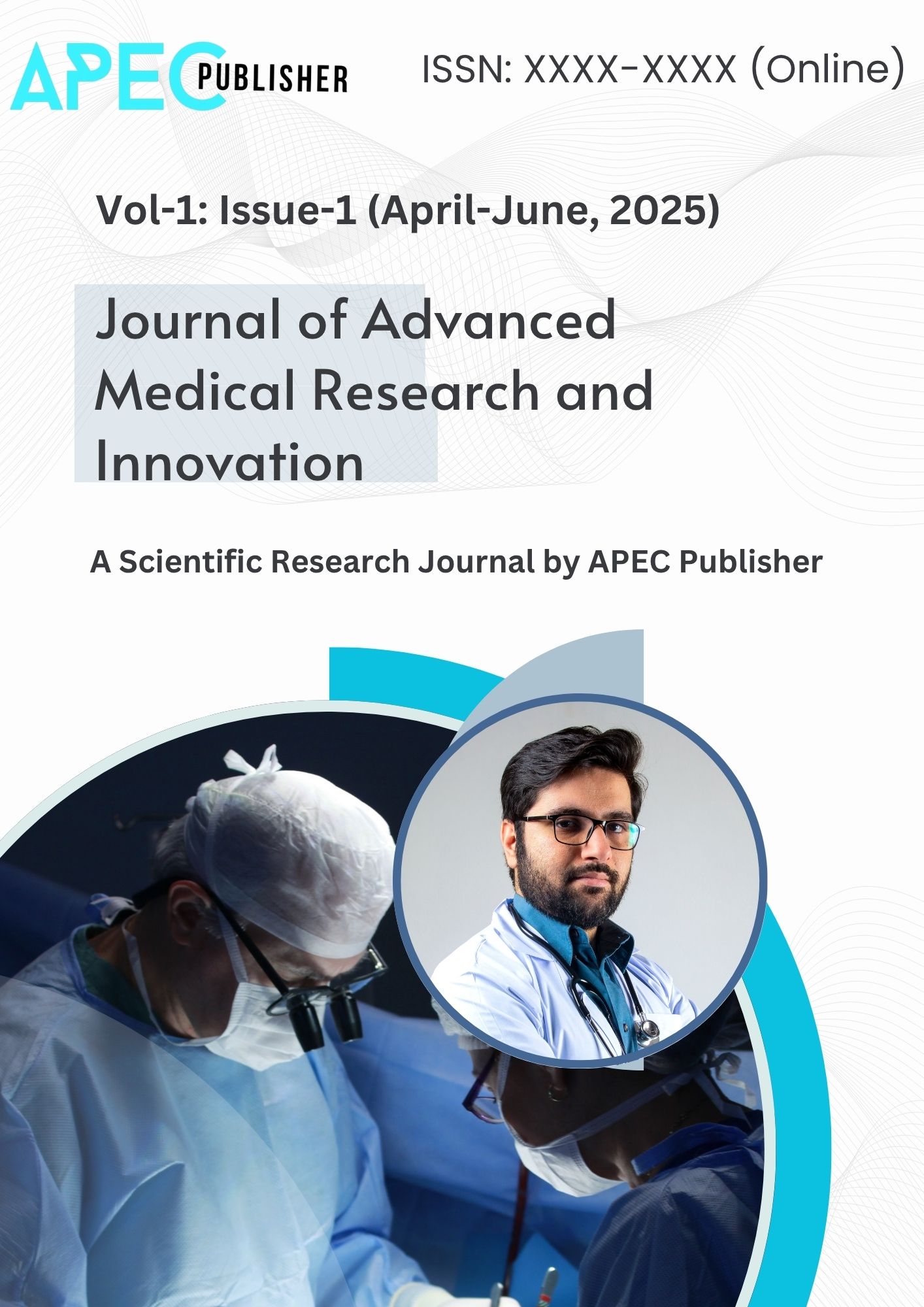
Journal of Advanced Medical Research and Innovation
An Open access peer reviewed international Journal.
Publication Frequency- Quarterly
Publisher Name-APEC Publisher.
ISSN Online- xxxx-xxxx
Country of origin-South Africa
Language- English
Implant Failure
Keywords
Authors
Abstract
Dental implant failure, defined as the loss of integration or retention of an implant, presents a significant challenge in restorative dentistry, with reported incidence rates varying from 0.76% to 11.3%. Failures are categorized as early (occurring prior to osseointegration) or late (occurring after successful integration). Early failures are primarily attributed to factors such as inadequate initial stability, surgical trauma, poor bone quality, and infection. In contrast, late failures are often a consequence of peri-implantitis, biomechanical overload, and poor oral hygiene. Key risk factors encompass both local elements (e.g., untreated periodontal disease, implant positioning, surface roughness) and systemic conditions (e.g., diabetes, smoking). Mitigation strategies hinge on comprehensive preoperative planning, meticulous surgical technique, and diligent long-term maintenance. Management of a failed implant requires a tailored approach, including possible removal, debridement, bone grafting, and addressing underlying etiologies. A history of periodontal disease is a major risk factor, underscoring the necessity of periodontal health prior to implantation. This review synthesizes the etiology, risk factors, prevention, and management protocols for dental implant failure to improve clinical outcomes.
